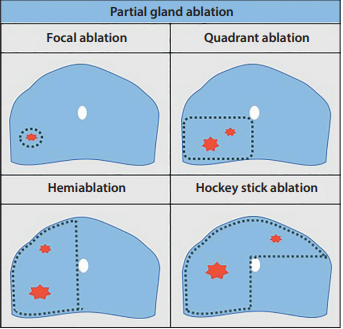This review provides an overview of the available ablative options for prostate cancer (PCa) management. It contemplates the ablative concepts and the role of prostate ablation in different settings, from primary treatment to repeat ablation, and as an alternative to radiorecurrent disease. Improvements in prostate imaging have allowed us to ablate prostate lesions through thermal, mechanical, and vascular-targeted sources of energy. Partial gland ablation (PGA) has an emerging role in the management of localized PCa because toxicity outcomes have been proven less harmful compared with whole-gland treatments. Although long-term oncological outcomes are yet to be consolidated in comparative studies, recent large series and prospective studies in PGA have reported encouraging results. A second ablation after disease recurrence has demonstrated low toxicity, and future studies must define its potential to avoid radical treatments. PGA is an attractive option for PCa management in different scenarios because of its low-toxicity profile. As expected, recurrence rates are higher than those seen in whole-gland procedures. Long-term oncological outcomes of primary and salvage options are required to endorse it among the standard treatments.
Cite this article as: Tourinho-Barbosa RR, Batista LT, Cathelineau X, Sanchez-Macias J, Sanchez-Salas R. Ablative options for prostate cancer management. Turk J Urol 2020; 47(Supp. 1): S49-S55.

.png)
.jpg)
.png)
.png)
